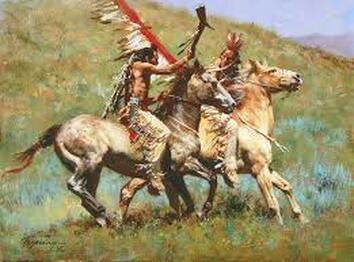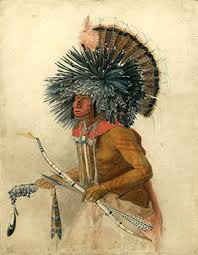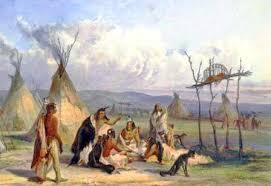|
EXIT of the DAY: Exit 212 on I-90W to SD 83, Antelope Creek Road and Fort Pierre, South Dakota This day in History in 1840 was the Birthday of Ogala Lakota Chief, Crazy Horse... Before his birth in 1840, these endless grasslands were cohabitated or fought over by various tribes. Those that lived in semi permanent villages along the Missouri River tended to cohabitate with the Plains Indians who would fight more regularly amongst themselves. In fact, the more sedentary River Indians like the Mandans, Hidatsa and Arika traded profitably with the nomadic Plains Indians, exchanging crops and handcrafts for meat and buffalo hide. Their semi-permanent Towns flourished and prospered on a scale not replicated by their more famous nomadic counterparts. The relatively mercantile River Indians suffered by peaceful association with the very early European explorers. Entire towns largely fell victim to the white man's diseases. Small pox devastated and wiped out entire Tribes — even before white settlers showed up en masse in the 1850’s. Soon their villages were quiet. All that remained were empty lodges. Most River Indians all but disappeared not long after the Lewis and Clark expedition of 1804-1805. Meanwhile the prairies were swept and dominated by one then other tribes. Due to their presence and brave resistance, the Plains Tribes are the better known today: the Blackfeet Nation, the Cheyenne, and the Sioux/Lakota. In fact, it’s believed that Crazy Horse's Lakota tribe was a very late settler coming to dominate the area just a few generations before the Europeans arrived. The Lakota came out of the woodlands to the east in Minnesota but becoming masterful horse warriors, they quickly displaced many of the local people. In the 1840's, European travel into the northern Plains was chiefly by water—at first in dugout and bark canoes, and later in steamboats. By the 1850's, the steamboats had reached the head of navigation, the trading post of Fort Benton, Montana at the very gates of the Rocky Mountains and more than 2,000 miles from the mouth of the Missouri. Traders soon established themselves along the river, intent on profits to be made through supplying factory-made goods in exchange for fine furs, buffalo robes, hides, and other native products gathered by the Plains Indians. Traders were followed by soldiers and later by ranchers, farmers, and then, Black Hills miners. This resulted in the USA reneging on treaty after treaty which tried to force the nomadic Indians into ever smaller Reservations. At Battle of the Little Bighorn(June 26, 1876), Custer met his fate and Sitting Bull along with Crazy Horse attained their last great victory before being swept beneath the flood of modern warfare and superior numbers. Before the end of the 1870's, Bison, the Indians' primary food source, were systematically slaughtered and all but disappeared. Dying along with his culture was Crazy Horse himself. He was killed in 1877(in Army Custody) just as his people moved onto the reservations. By 1880, the old nomadic life of the Plains Indians had vanished forever. Happy Birthday Crazy Horse! 🙏😓 #CrazyHorse #CrazyHorseBirthday #SouthDakota #Oglala #OgalaLakota #SouthDakota #HighwayHistory #Interstates #SouthDakotaTourism #Hidatsa #Mandan #Arika
0 Comments
Leave a Reply. |












